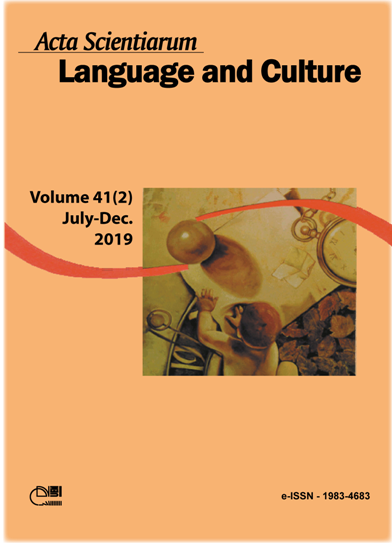The use of portuguese rhotics in contact with italian dialects
Abstract
This work aims to investigate the rhotic performance in the states of Rio Grande do Sul and Santa Catarina. Our interest is in the variable realization / R / in the contact between Portuguese and the Italian dialects brought by immigrants in the 19th century. In Portuguese language (Brazilian Portuguese [BP]), both simple and multiple vibrant phonemes are possible of accomplishment, being able to occur in syllabic attack, in the word beginning and in intervocalic position, or in syllable coda. In the BP, in contact with Italian dialects, the multiple vibrant realization, or vibrant alveolar[r], known as strong-R, can alternate with the tap realization [ɾ] or weak-r. One of the characteristics of spoken Portuguese by Portuguese-Italian bilinguals in the South of Brazil is the use of the simple (weak-r) rather than the multiple, resulting from the transfers from Italian to Portuguese. The hypothesis tested here is that in these speech communities the vibrant alveolar [r] and the tap [ɾ] are the most productive variants in the speech of individuals in a situation of Portuguese contact with Italian dialects. The methodology used was based on the Atlas Linguístico do Brasil (ALiB) and taking into consideration thirteen answers (words) obtained through a Phonetic-Phonological Questionnaire. The corpus consists in 108 participant answers for each word and the variable realization was observed in two contexts: intervocalic position and word beginning, such as Terreno (terrain) and Rosa (rose).
Downloads
DECLARATION OF ORIGINALITY AND COPYRIGHTS
I Declare that current article is original and has not been submitted for publication, in part or in whole, to any other national or international journal.
The copyrights belong exclusively to the authors. Published content is licensed under Creative Commons Attribution 4.0 (CC BY 4.0) guidelines, which allows sharing (copy and distribution of the material in any medium or format) and adaptation (remix, transform, and build upon the material) for any purpose, even commercially, under the terms of attribution.
Read this link for further information on how to use CC BY 4.0 properly.




















6.png)









